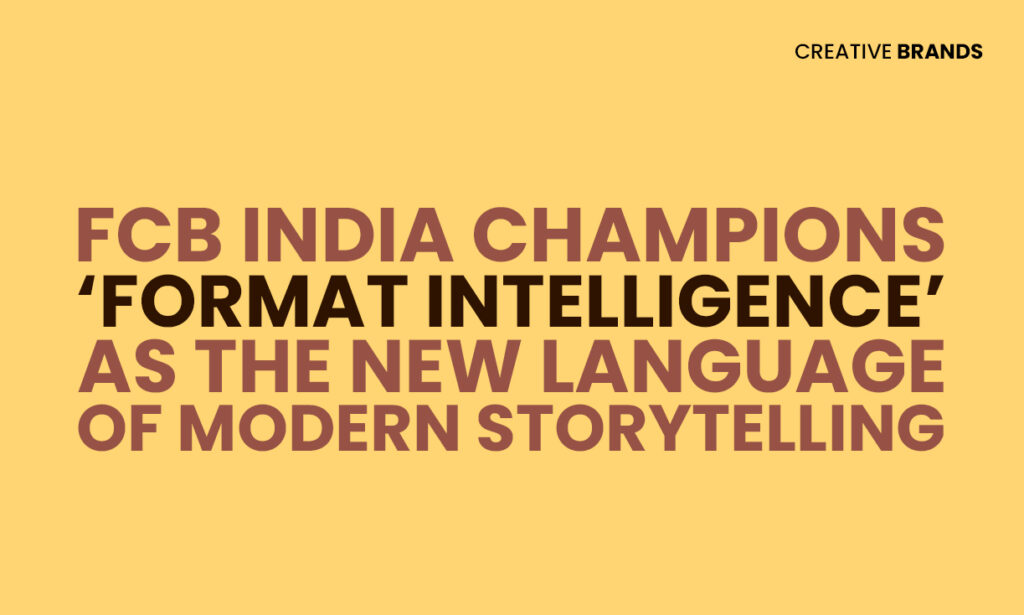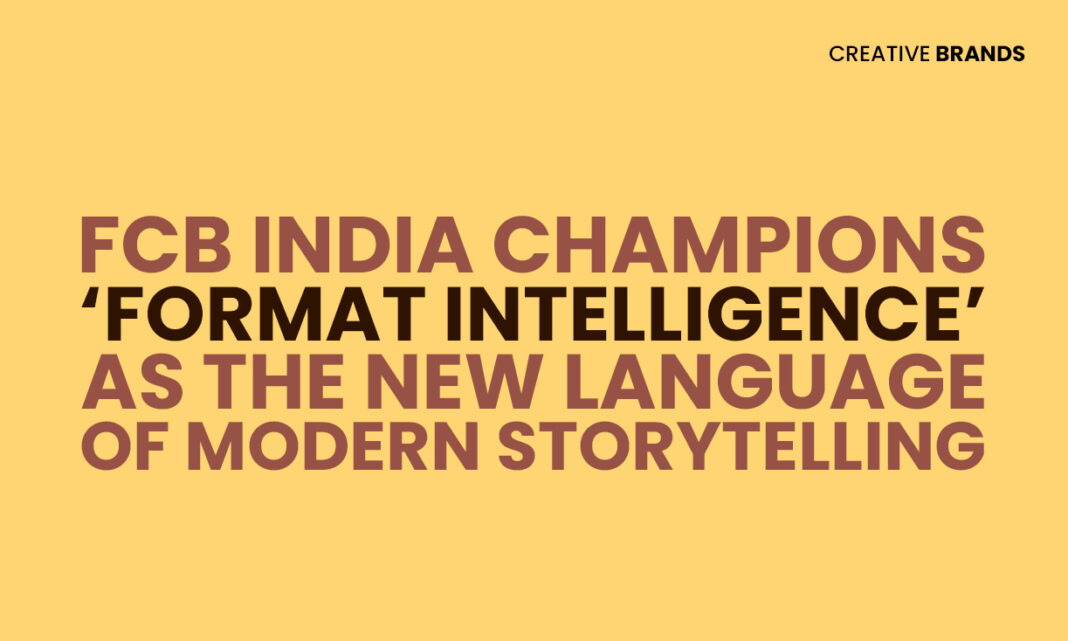FCB India showcases how storytelling now flows across formats, from social-native films to sensorial narratives and minimalist cinematic pieces. Through campaigns for Nissin, Sunfeast Choco Meltz, and Uber, the agency demonstrates “format intelligence” — the ability to adapt ideas fluidly across mediums without losing creative intent, craft, or cultural relevance.

FCB India’s latest body of work signals a pivotal shift in how modern advertising is imagined, built, and consumed, embracing what the agency calls “format intelligence” — the ability to make creativity move fluidly across screens, mediums, and cultural moments. In an era where attention is fragmented and storytelling is no longer bound to the classic 30-second structure, FCB India has been shaping campaigns that feel native to the environments they inhabit, each crafted with its own tone, rhythm, and sensory language.
For decades, brand films defined the grammar of advertising. They were the primary canvas for emotion, narrative, and craft. But the contemporary consumer doesn’t live in a single format; they scroll, swipe, watch, and replay across a universe of micro-moments. Storytelling, therefore, has shifted from being format-led to format-responsive. The question has changed from “What’s the film?” to “What’s the format play?” — a recalibration that now sits at the heart of FCB India’s creative philosophy.
This evolution is vividly reflected in FCB Ulka’s work for Nissin, a campaign that behaves with the velocity and humour of the social ecosystem it inhabits. Rather than adapting a traditional film for digital, the narrative feels innately born for the feed. Quick cuts, jump transitions, and hyperreal sound design tap directly into the gestures and visual language of Gen Z — a generation that scrolls fast, moves fast, and shares fast. The storytelling mirrors their digital cadence, creating a film that blends seamlessly into social culture instead of disrupting it. It’s advertising that behaves more like content, a piece of entertainment shaped for velocity and memetic potential.
Dheeraj Sinha, group CEO of FCB India and South Asia, articulates the shift succinctly: “We’re entering an era where creativity isn’t just a message — it’s a system that moves with culture. The next frontier lies in mastering attention: understanding how it behaves across screens, moments, and contexts. The brands that will win globally are the ones that can fluidly translate their ideas across these shifting formats without losing their soul.” His words frame a new creative mandate — one where format becomes a strategic layer, not a constraint.
If Nissin represents speed, Sunfeast Fantastik! Choco Meltz showcases sensory playfulness. For a molten chocolate snack positioned as an affordable indulgence, FCB Ulka crafts a narrative built around transformation — how a drizzle, spread, or sip of chocolate elevates ordinary moments into something heartwarming. Centred around the creative idea “Yum to Yummy,” the film brings alive the tactile pleasure of chocolate, using texture and movement not just as aesthetic choices but as storytelling tools. It’s a film designed to be felt as much as watched.
Aanandita Banerjee, head of production at FCB 456 Studios, explains the philosophy behind this approach: “Production today isn’t just about execution — it’s about extending the idea into its most powerful sensory form. Every sound, texture, and movement contributes to how the story feels. When craft becomes effortlessly invisible, that’s when emotion becomes unforgettable.” This perspective underscores the agency’s commitment to elevating craft not through spectacle, but through immersive detail.
On the other end of the spectrum lies the Uber × Gautam Gambhir campaign by FCB Neo — a masterclass in restraint. In a time when advertising often leans toward the dramatic or hyper-produced, this film chooses stillness and simplicity. With Gambhir playing the role of an understated citizen rather than a larger-than-life icon, the narrative captures the quiet heroism of everyday choices. Long takes, natural lighting, and a muted musical score lend the piece a grounded cinematic quality. The absence of ornamentation becomes its strength. Here, authenticity isn’t an aesthetic — it’s the story.
Together, these campaigns illustrate the agency’s ability to speak in multiple creative dialects while maintaining a coherent philosophy: creativity must behave differently depending on where it lives. A story meant for a social feed cannot carry the cadence of a cinematic film; a sensorial product experience demands a different texture than a purpose-led narrative. Each brand, each moment, and each platform has its own emotional and creative bandwidth — and format intelligence is the discipline of crafting for that specificity.
The idea sits at the core of FCB India’s evolving creative system. In a landscape overflowing with content, relevance is no longer just about message. It’s about matching the message to the medium with precision, empathy, and cultural clarity. Brands today need stories that can flex — that can be playful on social, heartfelt on film, immersive on digital, and simple when simplicity is the truest expression of truth.
Format intelligence doesn’t just reinterpret formats; it reimagines the relationship between creativity and context. It recognises that the same idea must breathe differently depending on where it appears, and that the most powerful stories are those that feel instinctively at home in their chosen format. As FCB India continues to explore this evolving canvas, the agency sees creativity not as a static output but as a dynamic system — one that adapts, evolves, and travels across formats without losing its meaning.
At its heart is a belief that “Creativity is an Economic Multiplier” — but only when it reinvents itself. That reinvention is visible across the agency’s work, in films designed for scroll culture, narratives built around sensory immersion, and stories that find power in simplicity. Each piece may speak a different language, but the ambition remains unified: to build creativity that moves with the world rather than asking the world to move with it.
In the age of multi-screen lives and ever-shifting attention, FCB India isn’t just crafting campaigns — it is crafting a new grammar for how stories live, travel, and transform across a fast-changing media landscape.







